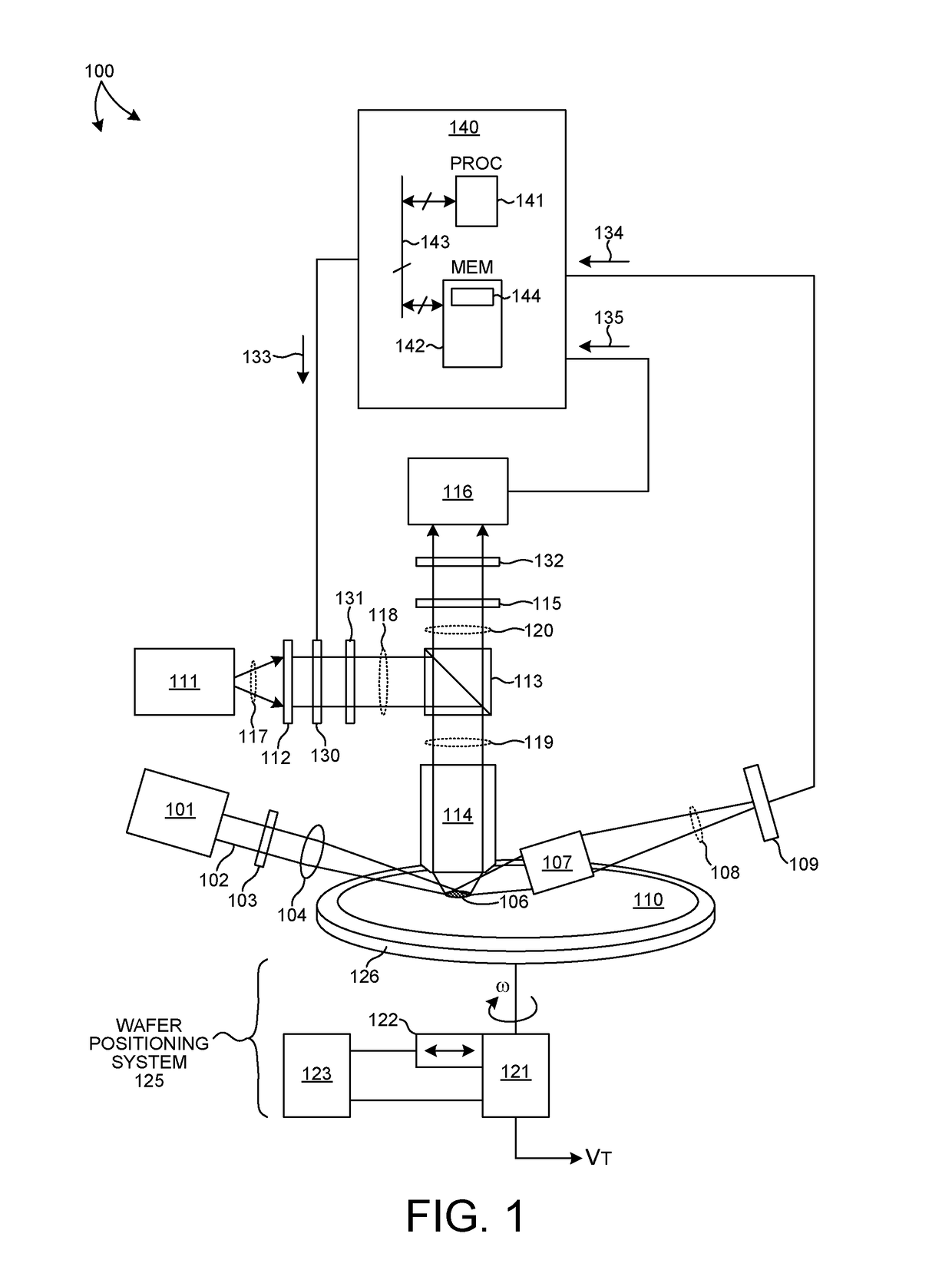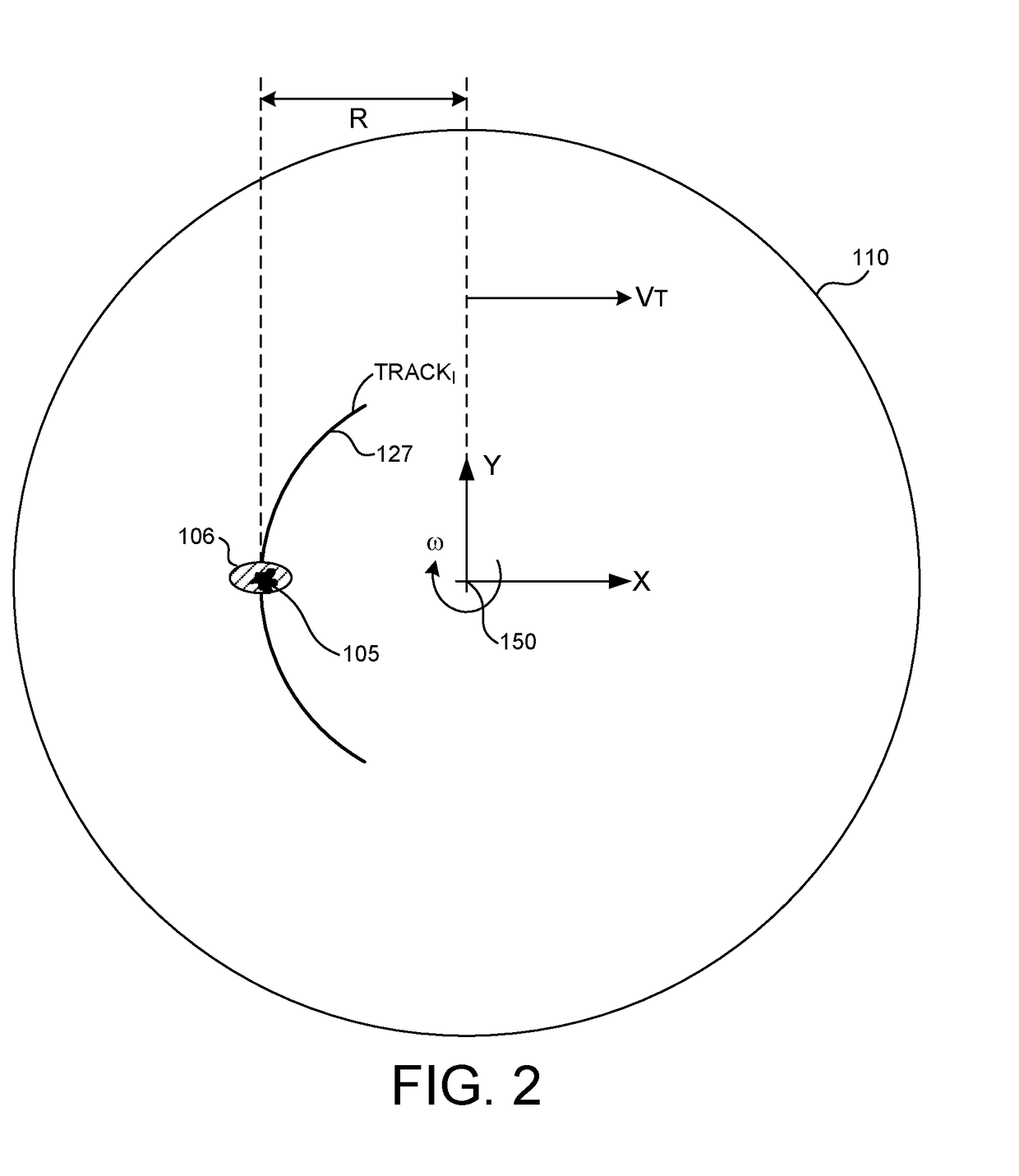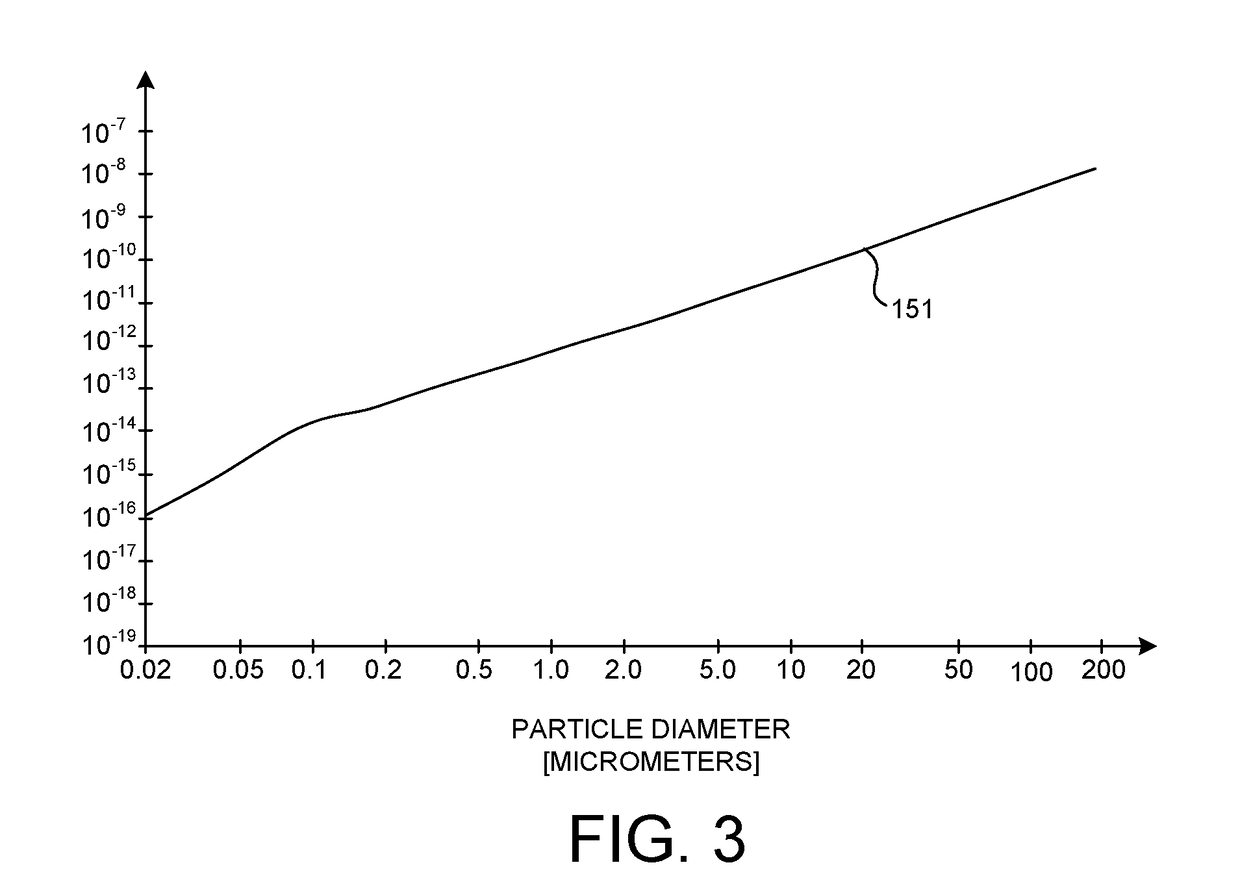Activation Of Wafer Particle Defects For Spectroscopic Composition Analysis
a technology of composition analysis and active wafer particles, applied in semiconductor/solid-state device testing/measurement, material analysis, instruments, etc., can solve the problems of high volume production environment, inability to positively identify defect types and origins, and high cost of time, so as to enhance weak spectroscopic signatures and enhance electromagnetic fields
- Summary
- Abstract
- Description
- Claims
- Application Information
AI Technical Summary
Benefits of technology
Problems solved by technology
Method used
Image
Examples
Embodiment Construction
[0037]Reference will now be made in detail to background examples and some embodiments of the invention, examples of which are illustrated in the accompanying drawings.
[0038]Methods and systems for detecting a particle defect on a wafer surface, transforming the particle to a spectroscopically active state, and identifying a material composition of the activated particle by a spectroscopic technique are described herein.
[0039]The inventive concepts described herein are based on the observation that many defect particles generated by semiconductor manufacturing equipment and processes are spectroscopically inactive (e.g., particles do not have atomic vibrational bands that can be observed with Raman spectroscopy). However, by chemical treatment, thermal treatment, photochemical treatment, or a combination thereof, particle defects are transformed such that an activated particle exhibits atomic vibrational bands that can be observed spectroscopically (e.g., via Raman spectroscopy).
[00...
PUM
| Property | Measurement | Unit |
|---|---|---|
| wavelength range | aaaaa | aaaaa |
| wavelength range | aaaaa | aaaaa |
| wavelength range | aaaaa | aaaaa |
Abstract
Description
Claims
Application Information
 Login to View More
Login to View More - R&D
- Intellectual Property
- Life Sciences
- Materials
- Tech Scout
- Unparalleled Data Quality
- Higher Quality Content
- 60% Fewer Hallucinations
Browse by: Latest US Patents, China's latest patents, Technical Efficacy Thesaurus, Application Domain, Technology Topic, Popular Technical Reports.
© 2025 PatSnap. All rights reserved.Legal|Privacy policy|Modern Slavery Act Transparency Statement|Sitemap|About US| Contact US: help@patsnap.com



